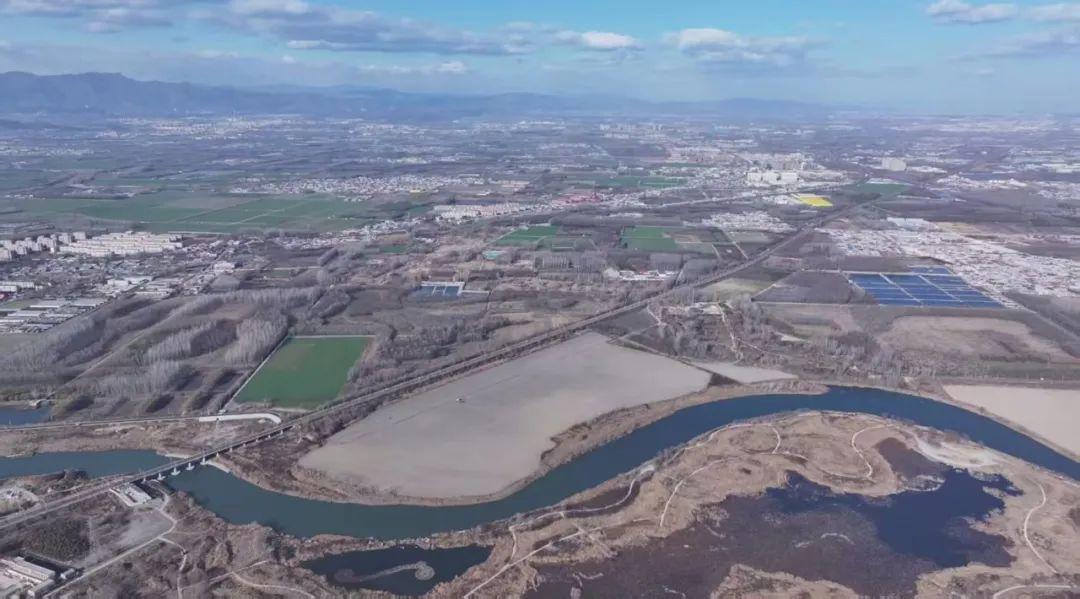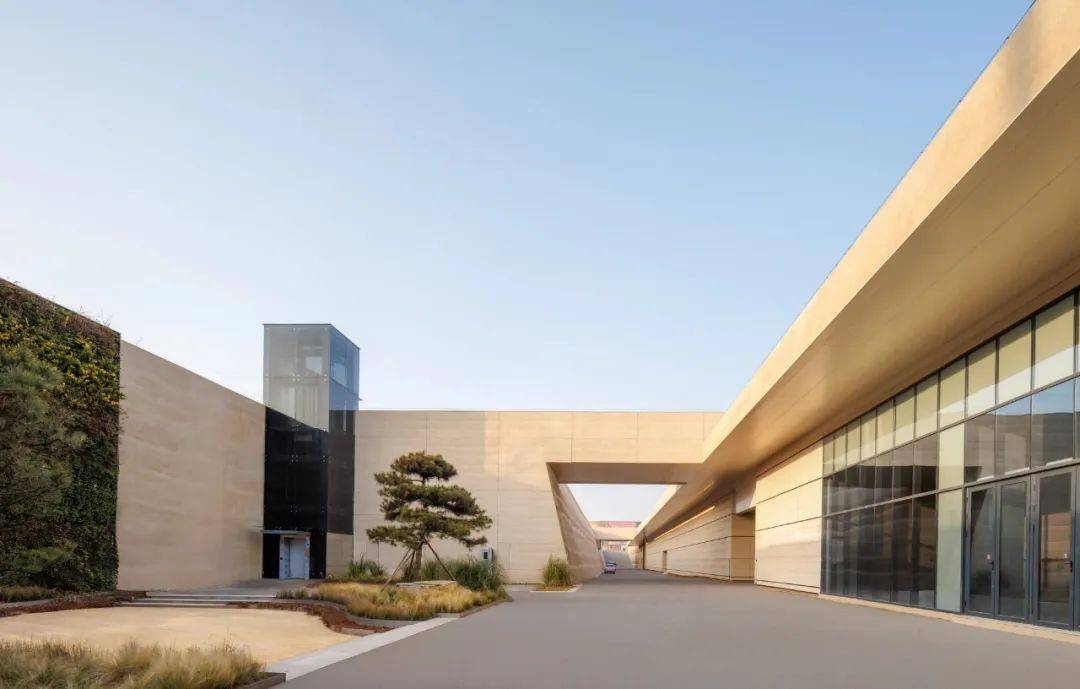
In 1129, Emperor Gaozong of the Song Dynasty crossed south and stopped in Hangzhou. He used the state government of Hangzhou as his palace, called Xingzaixuo, and promoted Hangzhou to Lin'an Prefecture. In 1138, Emperor Gaozong of the Song Dynasty formally ordered Lin'an as the capital. In the following 148 years, Lin'an City developed socially, economically and culturally, becoming the political, economic and cultural center of the entire Southern Song Dynasty.
As the former "Ancient Capital of the Southern Song Dynasty", Hangzhou has profound "Song Yun" genes.
In 2022, it is the 40th anniversary of Hangzhou becoming the first batch of national historical and cultural cities. The Paper learned that on August 27, "Walking in the mountains and rivers - Hangzhou Lin'an City from the perspective of the Southern Song Dynasty" was exhibited at the Hangzhou Museum. The exhibition is jointly curated by the Hangzhou Museum and the Hangzhou Institute of Cultural Relics and Archaeology, focusing on the archaeological discoveries of Lin'an City in the Southern Song Dynasty in the past 40 years, and organized a total of 311 sets of bronzes, paintings, gold and silver, and ceramics collected by 21 cultural and museum units across the country ( 1080 pieces) cultural relics, showing the social customs and cultural image of Hangzhou city more than 800 years ago. Among them, precious cultural relics such as the fan pages of "Qiantang Watching the Tide" in the Suzhou Museum, and the twenty-six loose pages of the block-printed "Xianchun Lin'an Zhi" in the Zhejiang Library will be displayed for a limited time. 
"Walking Between Landscapes - Hangzhou Lin'an City from the Perspective of the Southern Song Dynasty" exhibition site
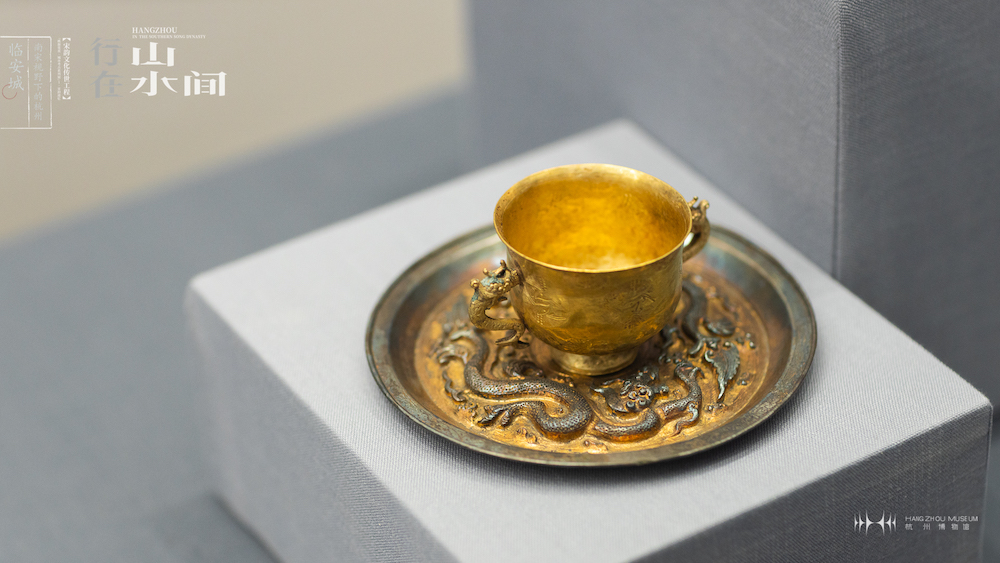
"Walking Between Landscapes - Hangzhou Lin'an City from the Perspective of the Southern Song Dynasty" exhibition site
Once the "Ancient Capital of the Southern Song Dynasty", a typical representative of Shanshui City
Hangzhou was called Qiantang in ancient times. In the ninth year of Kaihuang of Sui Dynasty (589), Qiantang County was abolished and Hangzhou was established.
Song Wang Mingqing's "Jade Zhao Xin Zhi" volume five: "Hangzhou was in the Tang Dynasty, and its popularity was not as good as the two counties of Suzhou and Kuaiji. It was prosperous because of the founding of the Qian family."
During the Five Dynasties and Ten Kingdoms period, Wu Yue Qianliu (907) rose and made Hangzhou the capital. After three dynasties and five kings, 72 years after the founding of the country, adhering to the policy of protecting the environment and the people, building seawalls, developing the economy, and prospering in the southeast, the social status surpassed that of Suzhou and Shaoxing, and became the political, economic and cultural center of the two Zhejiang provinces.
In the third year of Jianyan (1129), the Song Dynasty went to the south, and Hangzhou was promoted to Lin'an Prefecture. In the eighth year of Shaoxing (1138), the capital was Lin'an, and Hangzhou became the national political, economic and cultural center for 141 years. "According to the metropolis in the southeast, it is called the prosperous paradise in the world. . . . . . . During the Southern Song Dynasty, Hangzhou experienced the "urban transformation" of the modern turning point in ancient history, and gave birth to the "Renaissance" of traditional civilization in the Chinese sense. 
"Walking Between Landscapes - Hangzhou Lin'an City from the Perspective of the Southern Song Dynasty" exhibition site
The early history of Hangzhou can be regarded as a history of the changes of mountain settlements: from north to south, from Yuhang to Hangzhou, and then from west to east, from the deep mountains west of the West Lake to the low hills in the east of the lake, the city was built on the Phoenix Mountain, until the Southern Song Dynasty. It developed into the capital of Lin'an. The northwest and southwest of Lin'an City are low mountain and hilly areas in western Zhejiang, the northeast and southeast belong to the northern Zhejiang plain, the west of the city is leaning on the West Lake, and the southeast is adjacent to the Qiantang River, forming a unique landscape of "three sides of clouds and mountains and one city", which is a typical representative of a city with mountains and rivers. . 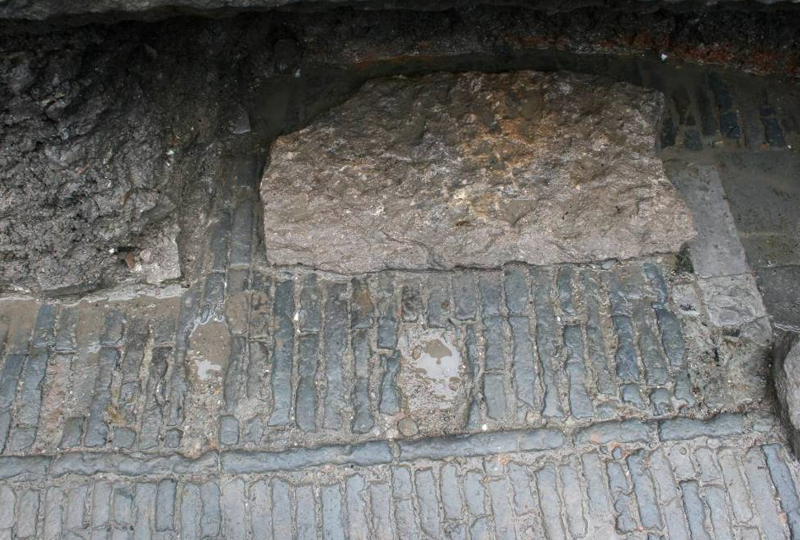
Remains of Royal Street Stone Slab Road in the Late Southern Song Dynasty

Ruins of Royal Street near Taimiao Temple. From 1995 to 1998, during the archaeological excavation in cooperation with the old city renovation project of Ziyang Street in Shangcheng District, a section of the ruins of a royal street in the Southern Song Dynasty was discovered outside the east wall of the Taimiao site at the Hangzhou Archaeological Institute.
As the former "Ancient Capital of the Southern Song Dynasty", Hangzhou has profound "Song Yun" genes.
Hangzhou Municipal Bureau of Landscape and Cultural Relics has been committed to the protection and activation of urban culture. In 1983, a large-scale investigation, drilling and trial excavation of Lin'an City in the Southern Song Dynasty began, including the Imperial City, Deokshou Palace, Taimiao Temple, Central Government Office, Royal Street, Queen's Residence, Local Government Office, Official Kiln, Temples, etc. A large number of important sites related to Lin'an City in the Southern Song Dynasty have made the outline of the deeply buried Lin'an City site gradually clear. At the same time, in-depth research on the rich unearthed cultural relics has been carried out, and fruitful results have been obtained. New Archaeological Discoveries". 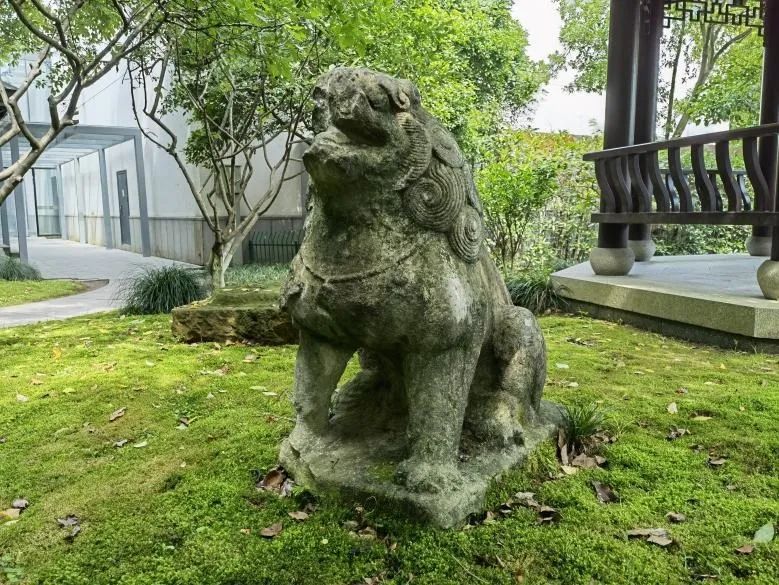
Stone lions from the Southern Song Dynasty Unearthed from the site of Wang Zhangxun's residence in Qinghe County, Wushan Shangcheng District, Hangzhou City, provided by Hangzhou Institute of Cultural Relics and Archaeology
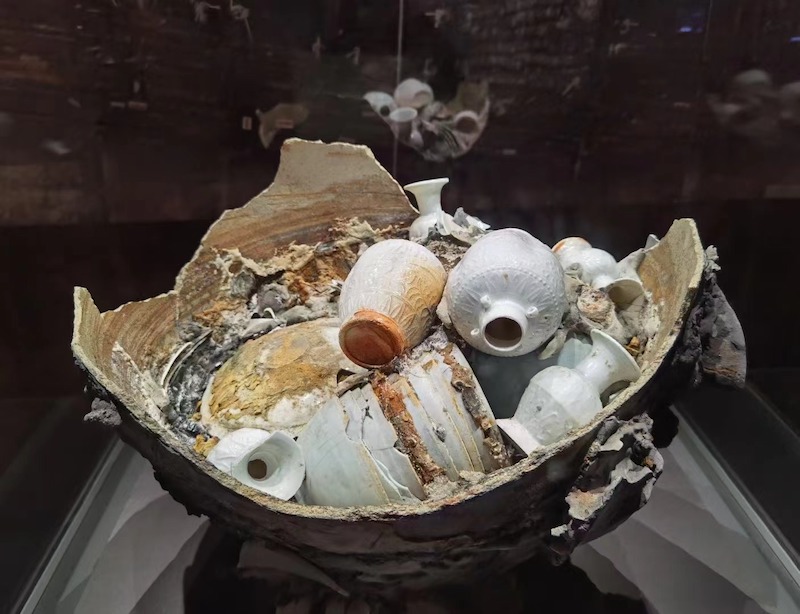
"Walking Between Landscapes - Hangzhou Lin'an City from the Perspective of the Southern Song Dynasty" exhibition site
Wang Yingxiang, curator of Hangzhou Museum, said in an interview with The Paper: "This exhibition looks for the 'Lin'an City' that is stacked 2-3 meters underground in Hangzhou through reviewing a large number of archaeological and documentary materials, field surveys, and rigorous verification. Xiangcheng The extension connects the interaction between Lin'an City and Yuhang, Lin'an, Fuyang, Yuqian, Xincheng, Yanguan, Changhua and other surrounding city sites. Based on the archaeological evidence unearthed in Lin'an City in the Southern Song Dynasty, 21 cultural and museum units across the country are organized to collect them. A total of 306 sets (1075 pieces) of cultural relics including bronzes, paintings and calligraphy, gold and silverware, and ceramics were collected, and digital exhibition items and multimedia interpretations were made, trying to reproduce Lin'an City to the audience in multiple forms with pictures and texts. Construct and restore the historical scenes and prosperous features of Lin'an City, leaving the audience with infinite reverie." 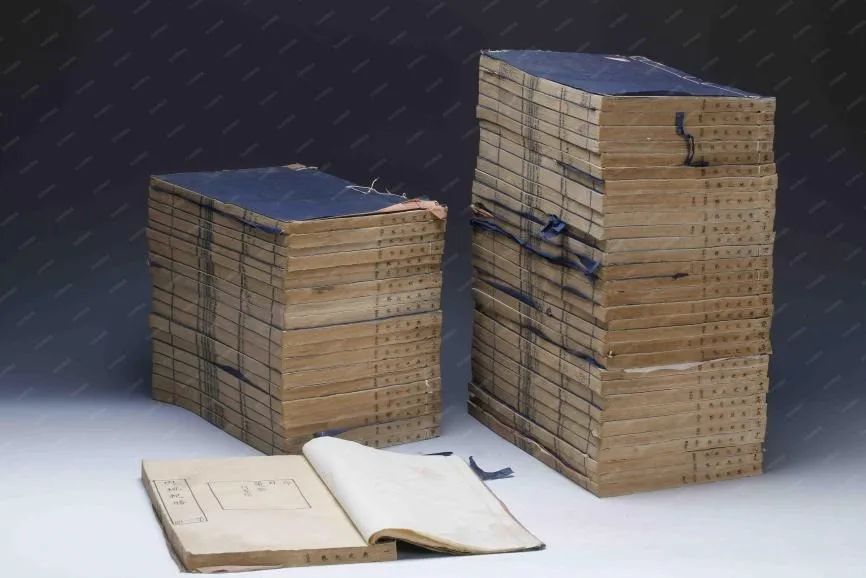
The Qing manuscript of Yudi Jisheng Collection of Hangzhou Museum

The first volume of the printed paper of Xu Weili's documents in the Southern Song Dynasty Unearthed from the tomb of Xu Weili in Wuyi, Zhejiang Province, in the collection of Wuyi County Museum
"The preparation time for the exhibition is as long as 8 months. In June 2022, we conducted a pre-exhibition survey on the special exhibition of Lin'an City in the Southern Song Dynasty. From the survey results, most people's understanding of the topics related to Lin'an City in the Southern Song Dynasty is average or not very good. Understand, among them, you will be relatively familiar with the history and social life of the Southern Song Dynasty, but you will be relatively unfamiliar with the archaeological work of Lin'an City, the city boundary and the natural environment." The curator of this exhibition, Wang Zhengyu, director of the Hangzhou Institute of Cultural Relics and Archaeology He told The Paper, "During the investigation, we collected a lot of questions about Lin'an City that everyone cares about and is curious about. For example: Lin'an City no longer exists, how do we know the scale of buildings in Lin'an City? What kind of difficulties have you been to, what are the differences between the architecture of the Song Dynasty and the architecture of the Tang Dynasty, the impact on the architecture of the Ming and Qing Dynasties, whether there is a discrepancy between the archaeological results and the literature records, etc. We also took your questions and visited the archaeologists. And related scholars, their answers are all presented in this exhibition.” 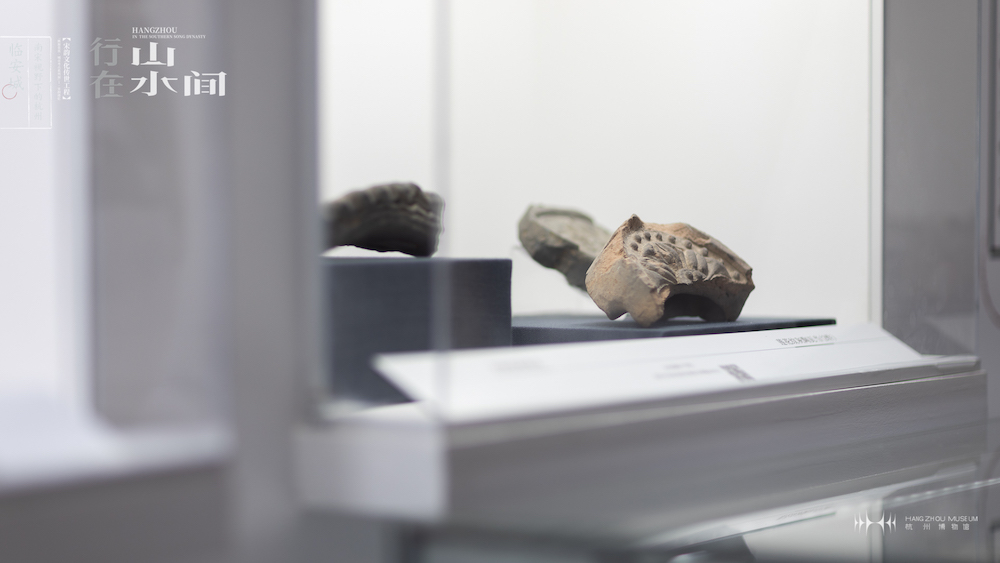
"Walking Between Landscapes - Hangzhou Lin'an City from the Perspective of the Southern Song Dynasty" exhibition site

"Walking Between Landscapes - Hangzhou Lin'an City from the Perspective of the Southern Song Dynasty" exhibition site

"Walking Between Landscapes - Hangzhou Lin'an City from the Perspective of the Southern Song Dynasty" exhibition site
Why Hangzhou: "Reappearance" and "Reimagination" of Lin'an City
The second floor of the exhibition hall starts from the city wall, and displays archaeological discoveries from the imperial city to the ritual buildings and the central government office, from the imperial street to the official residence and public facilities, supplemented by historical documents and modern interpretations, showing the urban layout and functions of Lin'an City. Lakes, rivers and seas are the veins, showing the characteristics of Lin'an City as a typical southern landscape city, and "reproducing" the history related to Hangzhou City from the perspective of the Southern Song Dynasty. 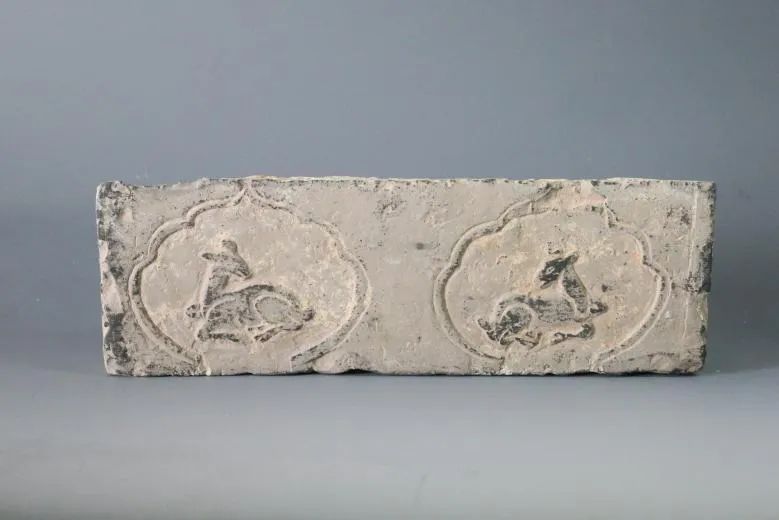
Southern Song Dynasty Deer Pattern Brick Unearthed in 1995 at the Hangzhou Cigarette Factory, Shangcheng District, Hangzhou City, Hangzhou City Museum
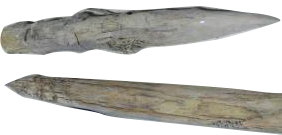
Wooden stakes in the east city wall of Wangjiangmen in the Southern Song Dynasty Unearthed from the ruins of Wangjiangmen city wall in Shangcheng District, Hangzhou City, provided by Hangzhou Institute of Cultural Relics and Archaeology

Southern Song Dynasty "Zong Xue Sheng Jun Tong House Inscription" Stele Unearthed at the Southern Song Dynasty Zong Xue Site in Shangcheng District, Hangzhou City in 2012 Provided by Hangzhou Institute of Cultural Relics and Archaeology
On the third floor of the exhibition hall, the highlights of Southern Song art and culture, such as literati, commodity economy and secular life, aesthetics, and overseas trade, lay out today's imagination of the living conditions and spiritual world of Lin'an city people. 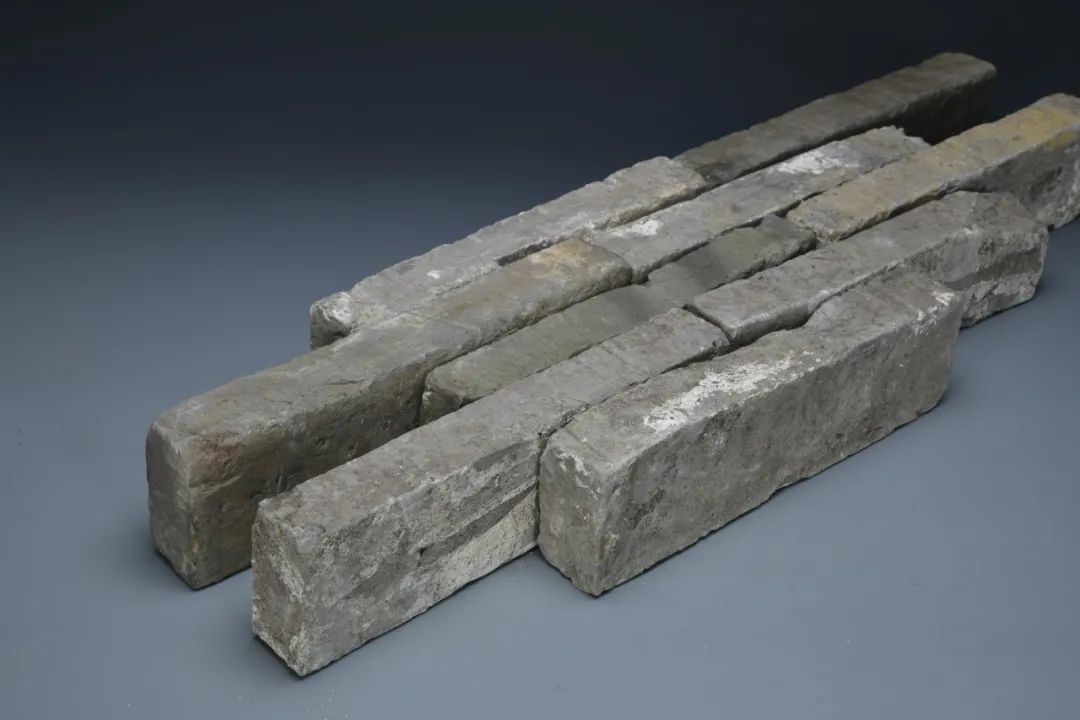
Fragrant cake brick, Southern Song Dynasty (1127-1279) Unearthed from the ruins of Yujie in the Southern Song Dynasty
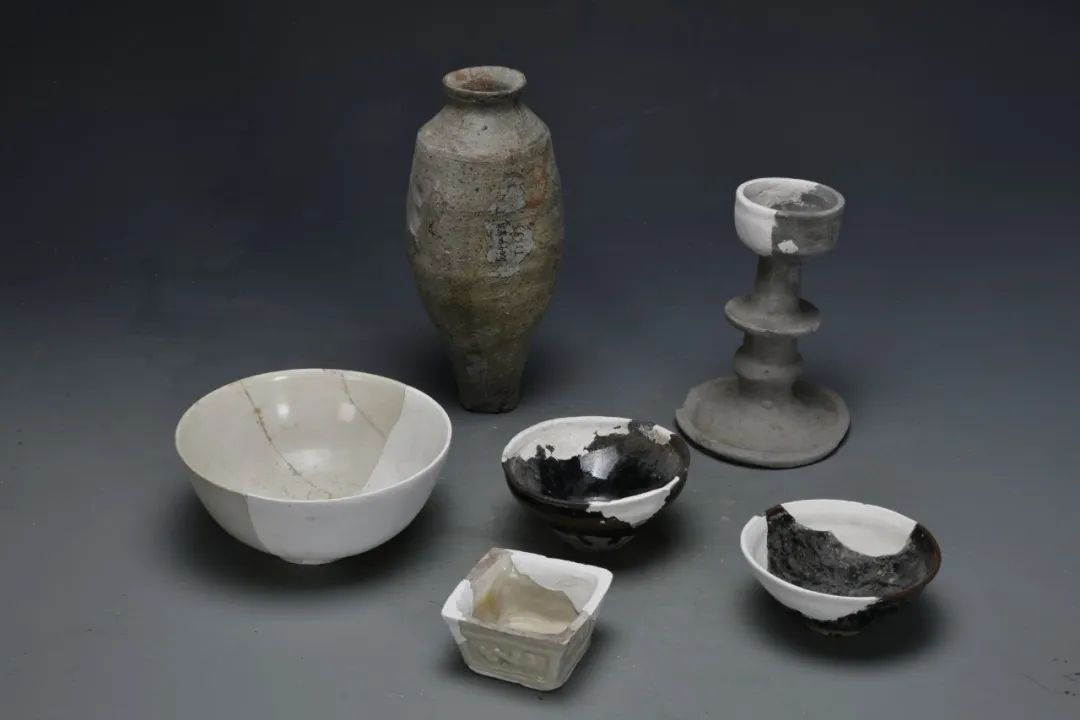
A group of porcelain, Southern Song Dynasty (1127-1279) Unearthed from the Yujie Ruins in the Southern Song Dynasty
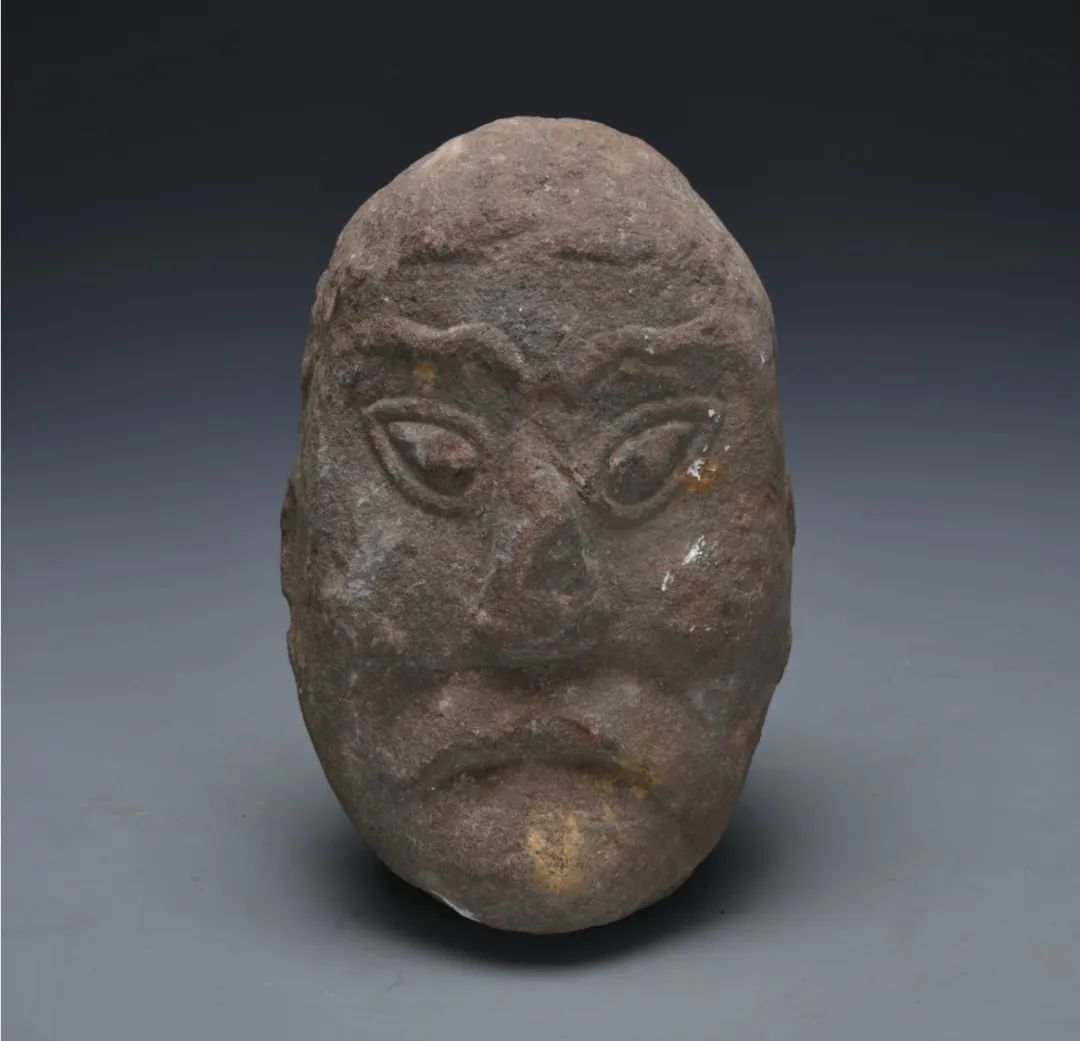
Stone head, Southern Song Dynasty (1127-1279) Unearthed from the Taimiao site in the Southern Song Dynasty
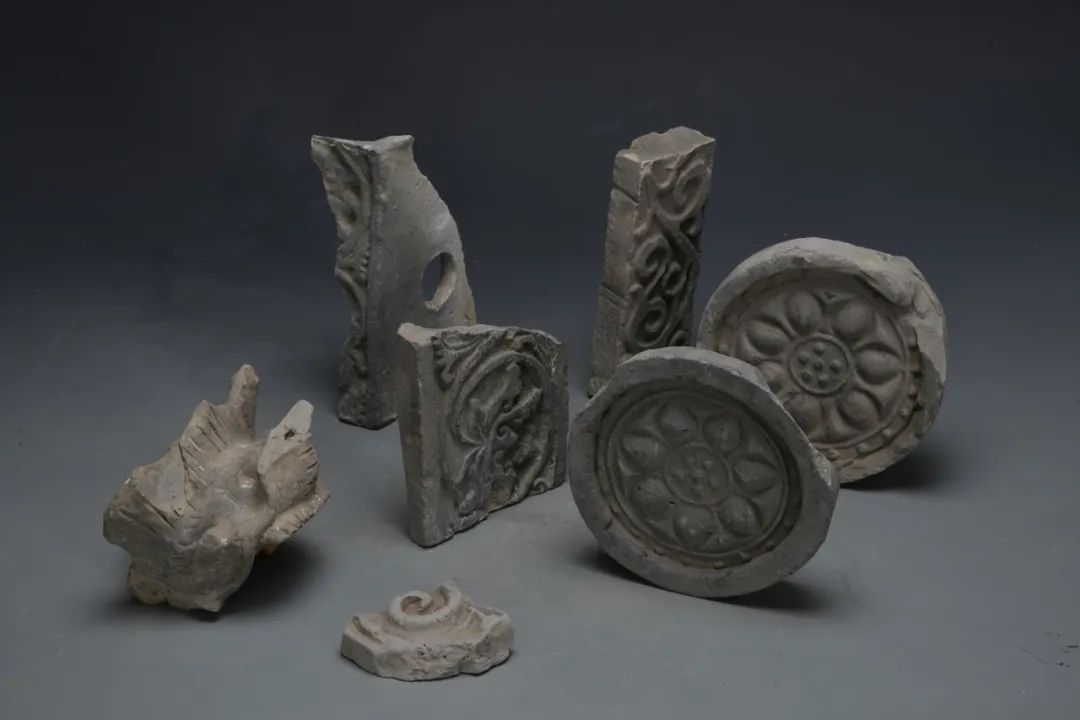
A group of building components, Southern Song Dynasty (1127-1279) Unearthed from the Lin'an Fuzhi Site in the Southern Song Dynasty
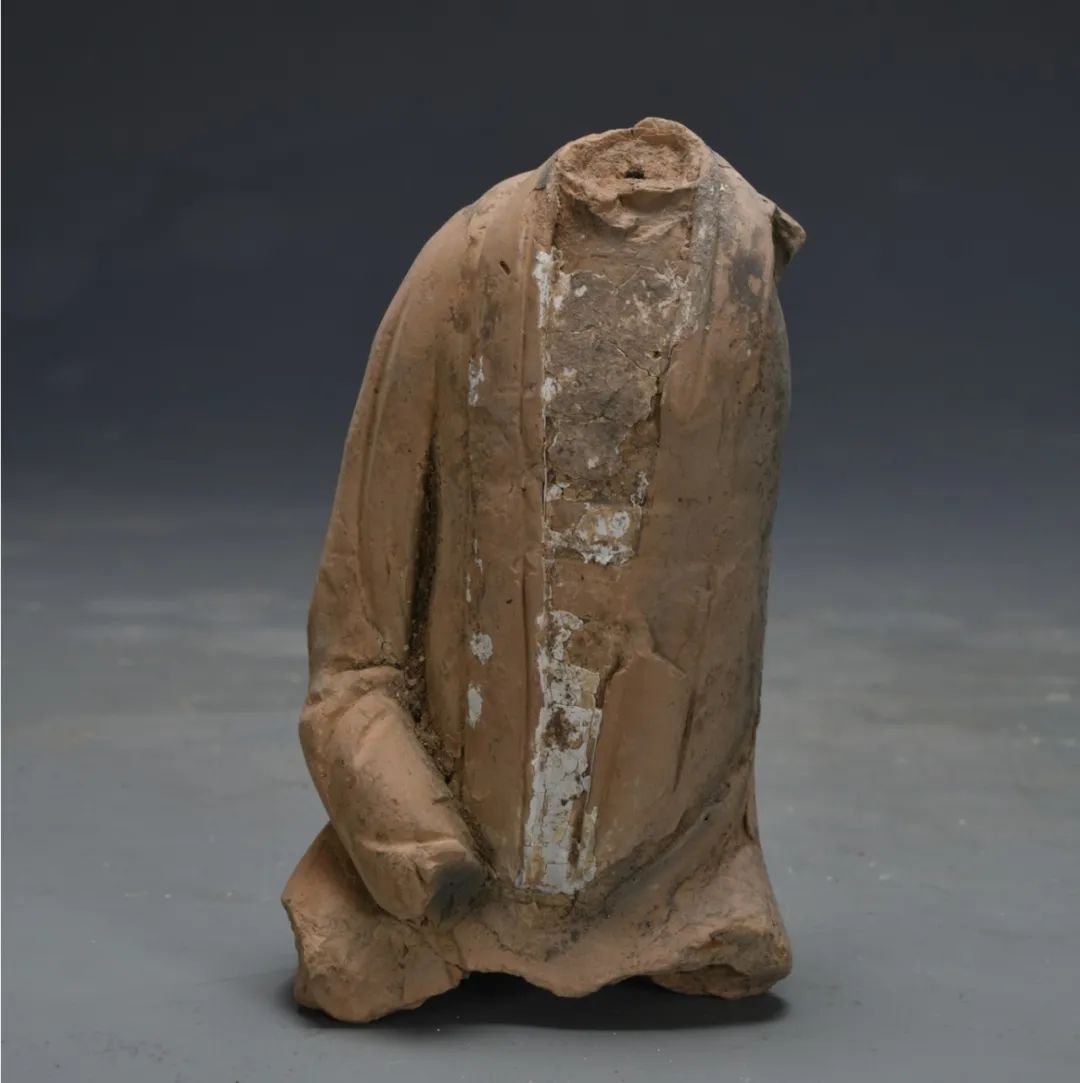
Statue Remnant, Southern Song Dynasty (1127-1279) Unearthed from Wufu Site in Southern Song Dynasty
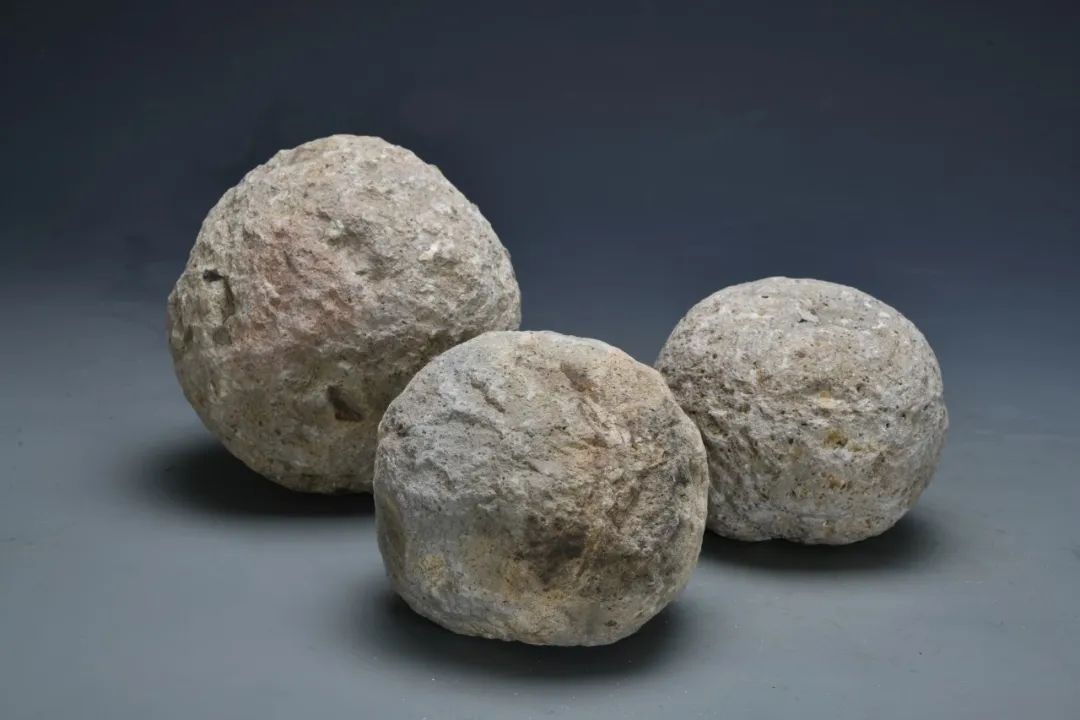
Shi Danwan, Southern Song Dynasty (1127-1279) Unearthed at the Lin'an Fuzhi Site in the Southern Song Dynasty

Longquan kiln powder celadon glazed phoenix head and ear porcelain vase, Southern Song Dynasty (1127-1279), unearthed in Hangzhou Gudang in October 1978, collected by Hangzhou Museum
In addition to a large number of archaeological unearthed relics reflecting the achievements of the archaeological work in Ancheng over the past 40 years, such as incense cake bricks, stone heads, building components, statue fragments, stone pellets, etc., there are also many unearthed relics in the 12th year of Ming Zhengtong (1447). Biography", Longquan kiln powder celadon glazed phoenix head and ear porcelain vase, "Luo Shuangshuang" inscription silver shoes, Manchijiao interlayer silver gilt calendula, bamboo leaf pattern gold bridge hairpin, crystal pen holder and other exhibition boutique products, there are more collections of the Palace Museum in the Southern Song Dynasty Three precious ancient calligraphy and painting works on the page of Chen Qingbo's "Spring Dawn in the Lake Mountains", Xia Yong's "Fenglelou Map" in the Yuan Dynasty and the fan page of the Southern Song Dynasty's "Qiantang Watching the Tide" in the Suzhou Museum are on display for a limited time. 
Southern Song Dynasty Xiaqian Tide Viewing Map Collection of Suzhou Museum Exhibition period: August 27, 2022 - September 27, 2022
Among them, the fan page of "Viewing the Tide in Qiantang" is signed "Xia □". The seal collection is printed on the side of Zhu Wenyin, "Young Master Yun Guogongsun". This picture adopts the "Zhi"-shaped composition, the left and right are solid, and the front and back are communicated with an oblique line of anger, which avoids the disadvantage that the courtyard is usually isolated before and after the scene. The mountains near the shore are lush and forested, and now there is a corner of the pavilion, and the Liuhe Pagoda stands in it, the description is simple but not random. The tides on the Zhongjing River are surging and the waves are magnificent. The mountains on the far shore are continuous, disappearing and appearing from time to time, and they are linked together and dyed, adding a sense of vastness to the picture. Although the size of the picture is small, it can see the big in the small, showing the surging and magnificent Qiantang tide. There are two characters on the treetop on the left. Due to the damage of the silk, only the word "Xia" remains vaguely recognizable.
The Qiantang tide is a wonder of the world. During the Southern Song Dynasty, tide watching became more and more popular. "Menglianglu" has a cloud: "The customs of Lin'an are extravagant at the four seasons, and there is no virtual day to enjoy. There is a lovely lake in the west, and the river tide in the east is worthy of viewing, all of which are superb scenery." All are important activities in the city tour. Poems and paintings with the theme of "Watching the Tide in Qiantang" also began to rise. This work is undoubtedly a reflection of the trend of watching the tide at that time. 
Block Edition "Xianchun Lin'an Chronicles", Volume 26, Loose Pages, Southern Song Dynasty (1127-1279) Collection of Zhejiang Library Exhibition Period: August 27, 2022 - October 24, 2022
During the Southern Song Dynasty, the local chronicles of Lin'an (now Hangzhou, Zhejiang Province) were published one after another, such as "Lin'an Chronicle of Gandao", "Chunyou Lin'an Chronicle" and "Xianchun Lin'an Chronicle".
Among them, "Xianchun Lin'an Chronicle" was compiled by Qian Shuoyou in the Southern Song Dynasty on the basis of "Main Road Lin'an Chronicle" and "Chunyou Lin'an Chronicle", with a total of 100 volumes. Qian Shuoyou, courtesy name Jungao, was born in Jinyun, Chuzhou (now Jinyun County, Lishui City), and was a jinshi in the fourth year (1244) of Lizong Chunyou. In the sixth year of Xianchun (1270), he was entrusted with the Minister of the Ministry of Accountability, and was informed of the affairs of the Lin'an Army. He was named the founding man of Jinyun County.
During the Southern Song Dynasty, the local chronicles of Lin'an (now Hangzhou, Zhejiang Province), "Lin'an Chronicle of Gandao", "Chunyou Lin'an Chronicle", and "Xianchun Lin'an Chronicle", came out one after another, and later generations called them "the three records of Lin'an". "Xianchun Lin'an Chronicle", as the latest one, has improved in both style and content. "Xianchun Lin'an Chronicle" has a total of 100 volumes. The first fifteen volumes are recorded by Xingzai, and the following sixteen volumes are the government records. The content includes the Lin'an Prefecture and its subordinate Qiantang, Renhe, Yuhang, Lin'an, Yu Qian, etc. Counties, covering 19 categories such as territory, mountains and rivers, rank officials, and people, are quite comprehensive. Among them, the descriptions of the local economy, urban public construction and management, the historical sites of the West Lake, and the records of characters are relatively complete, especially prominent in the local chronicles. "Xianchun Lin'an Chronicle" quoted historical books extensively, indicated the source, made many researches, revisions and revisions to the previous records, and also listed special textual research on major events, which improved the accuracy of the local chronicles and the value of historical materials. This chronicle is a masterpiece among the Southern Song local chronicles. It provides detailed information for the study of the politics, economy, culture, and customs of the Hangzhou area during the Southern Song Dynasty. It also has high documentary value for the study of Song history. The circulating editions include the Haiyuan Pavilion Collection, the Qiantang Ding Bing Rare Book Room Collection, and the Wang Shizhenqitang Collection.
This page is one of the Song edition pages collected by Zhang Zongxiang. Half a page and ten lines, each line is nineteen characters, and the small characters are the same. It belongs to "Xianchun Lin'an Chronicle" Volume 26, which describes the mountains and rivers in Qianxian County, involving the orientation, origin, and landscape of the mountains. 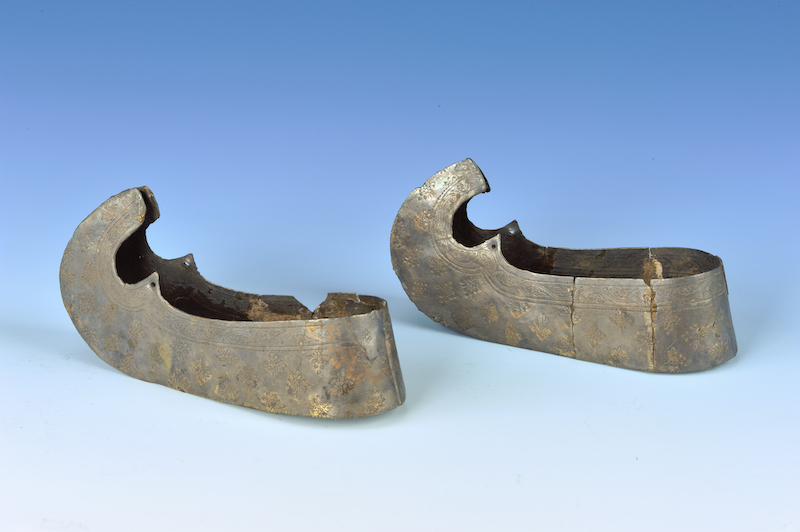
"Luo Shuangshuang" inscription silver shoes, Southern Song Dynasty (1127-1279), Unearthed from the tomb of Shi Shengzu in the tenth year of Xianchun (1274), Quzhou, Southern Song Dynasty in 1974, in the collection of Quzhou Museum
Each shoe is welded by three pieces of silver (one sole, two uppers). The toe is upturned, the mouth has a honeysuckle pattern for a week, the upper is chiseled with treasures, the sole is chiseled and the double hook "Luo Shuangshuang" word. The silver shoes are hard in texture, and they should not have been used during his lifetime, but rather a burial utensil. The shoes are small in size and similar in shape to the small foot-binding shoes at that time, which can be considered as evidence of foot-binding for women in the Southern Song Dynasty.
The shoes were unearthed in the joint tomb of Shi Shengzu and Yang's husband and wife. Luo Shuangshuang, according to Yang's epitaph is Shi Shengzu's ex-wife "Luo Shi", the silver shoes should be related to Luo Shi. I don't know why they appeared in the joint tomb of Shi Shengzu and Yang's more than 30 years later. Burial means tomb.
Shi Shengzu (1191-1274), courtesy name Qingchang, was born in Meishan, Sichuan. He has rich experience as an official. He has served as a transfer envoy on Tongchuan Road. He has served as Jiangxi and Jiangdong, and he has served as a doctor in the court. He studied under Wei Liaoweng, a famous scholar in the Southern Song Dynasty.
According to literature records, the tombs of Pinguan in the Song Dynasty generally required "heavy funerals and thin burials", and the funeral was solemn, but there were few valuable funerary items in the coffins. However, there are still thick burials in economically developed areas, and many tombs are not only rich in burial objects, but also have gold and silver utensils unearthed. Scholar-bureaucrats were deeply worried about the atmosphere of thick burials, and wrote books and stand-ups against it, hoping to imitate ancient rituals and practice thin burials. 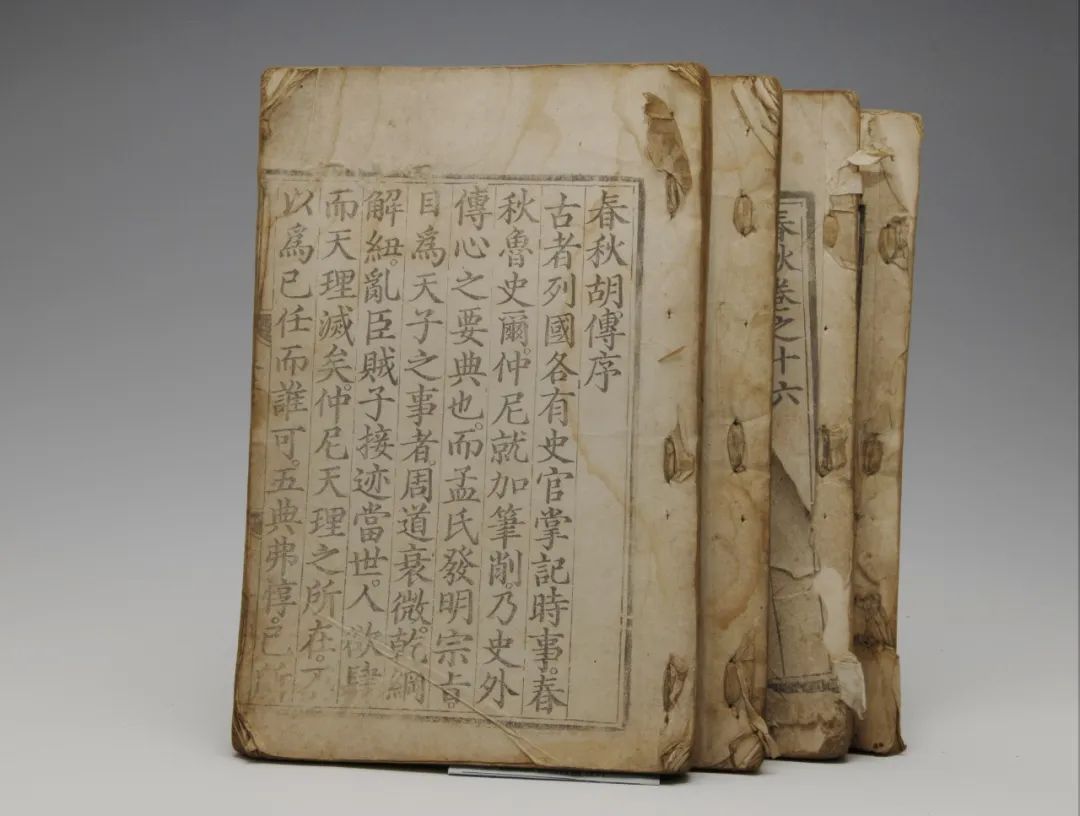
The 30th volume of the "Spring and Autumn Hu Zhuan", the 12th year of Ming Zhengtong (1447), in the collection of Hangzhou Museum
"Spring and Autumn" is an important historical and political work in the history of our country. Because of its profound meaning and incomprehension, later generations made biography and interpretations one after another. "The Spring and Autumn Annals of Hu" belongs to this kind of work. Its characteristic is that the author Hu Anguo did not interpret the scriptures or interpret the scriptures by passing on them, but based on the society, the reality, and the court of the Southern Song Dynasty. pass. "Zhu Zi's Quotations" says that "Hu's "Spring and Autumn Annals", the discussion has the spirit of opening and closing. After the writing of this book, in addition to being valued by the current world, it also had a great impact on later generations. In the Yuan and Ming Dynasties, it was the official final version of the imperial examination, reflecting the recognition of its academic value by the ruling class.
Hu Anguo (1074-1138), courtesy name Kanghou. Jianning Chong'an people (now in Wuyishan City, Fujian Province). Song Zhezong Shaosheng four years (1097) Jinshi, successively held the post of Doctor of Taixue, promoted Hunan Road Academic Affairs and other positions. During the Song Dynasty, he was a famous scribe, known in the world for his "Spring and Autumn Annals". He lived in seclusion for a long time in the Hengshan area, founded Biquan Academy and Wending Academy, and taught his children and disciples. From the fourth year of Song Huizong Chongning (1105) to the sixth year of Song Gaozong Shaoxing (1136), Hu Anguo completed the "Spring and Autumn Hu Zhuan", which has a high reputation in the history of "Spring and Autumn", with a total of more than 100,000 words. .
The "Chunqiu Hu Zhuan" in the Hangzhou Museum was in the 12th year of the orthodoxy (1447), and Ming Yingzong ordered the Sili Jian to engrave one of the "Five Classics". Half a page and eight lines, with eighteen characters, the same small characters, black mouth, two sides around, and double black fish tails. The Ming Dynasty Neifu engraved version is the royal engraving of the Ming Dynasty, and it is one of the most important edition types in the field of ancient book editions. 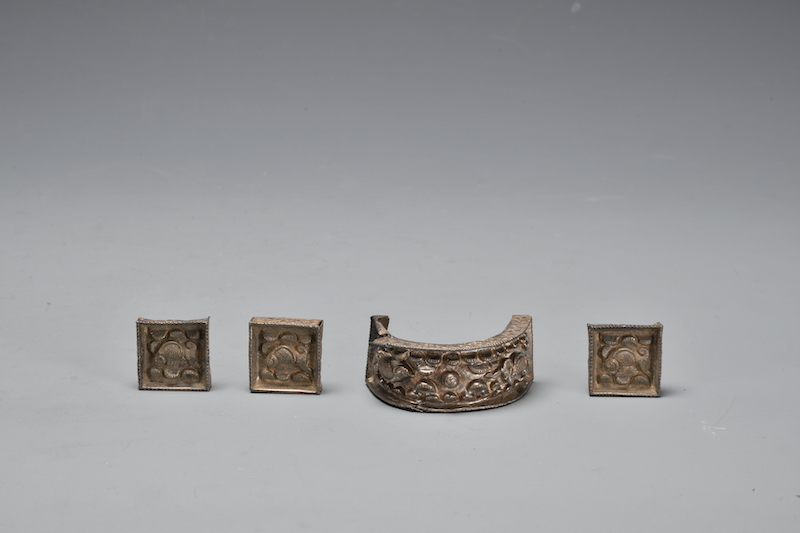
Silver fish bag and silver belt kuǎn (kuǎ), Southern Song Dynasty (1127-1279) Collection of Hangzhou Museum
This set of silver fish bags and silver belt kuǎn (kuǎ), with folded edges and clasps on the back, are accessories on leather belts. The four pieces are engraved with wave patterns along the outer sides, three of which are square belts, and the main pattern is high guipure waves, guarding a carp in the center. One is a single-vaulted fish bag with a high guipure sea fish, which should have had a pair of vertical arches. 
Silverfish bag and silver belt kuǎn (kuǎ) on display
Fish bags, used to store portable fish charms, first appeared in the Tang Dynasty. Since the Five Dynasties, fish bags no longer store fish charms, but become a status symbol for high-ranking officials. "Song History" Volume 15 "Shenzong Benji II" contains: "The fish bag. It was made from the beginning of the Tang Dynasty... Because of the Song Dynasty, its system was made of gold and silver ornaments in the shape of fish, and the public clothes were tied to the belt and hung at the back. Ming Dynasty is noble and lowly, and it is not as complex as the Tang Dynasty." Regarding the use system of fish bags, "Song History Yufu Zhi Wu" stipulates that the fourth-rank officials in purple imperial uniforms and the sixth-rank officials in crimson uniforms , can only wear gold or silver fish bags: "Zhongxing, still made by Yuanfeng, the fourth grade is purple, the sixth grade or above is red, and the ninth grade or above is green. Those who wear red or purple must wear fish, which is called Zhangfu. Non-official. To the original product, do not use fake people."
The use of fish bags in the Tang Dynasty was mainly concentrated in the Central Plains and Northwest China. The people who used it were mainly court officials and foreign ministers at that time, and they were worn on the lower left or lower right side of the waist when using it, which was an important part of the Zhangfu system. 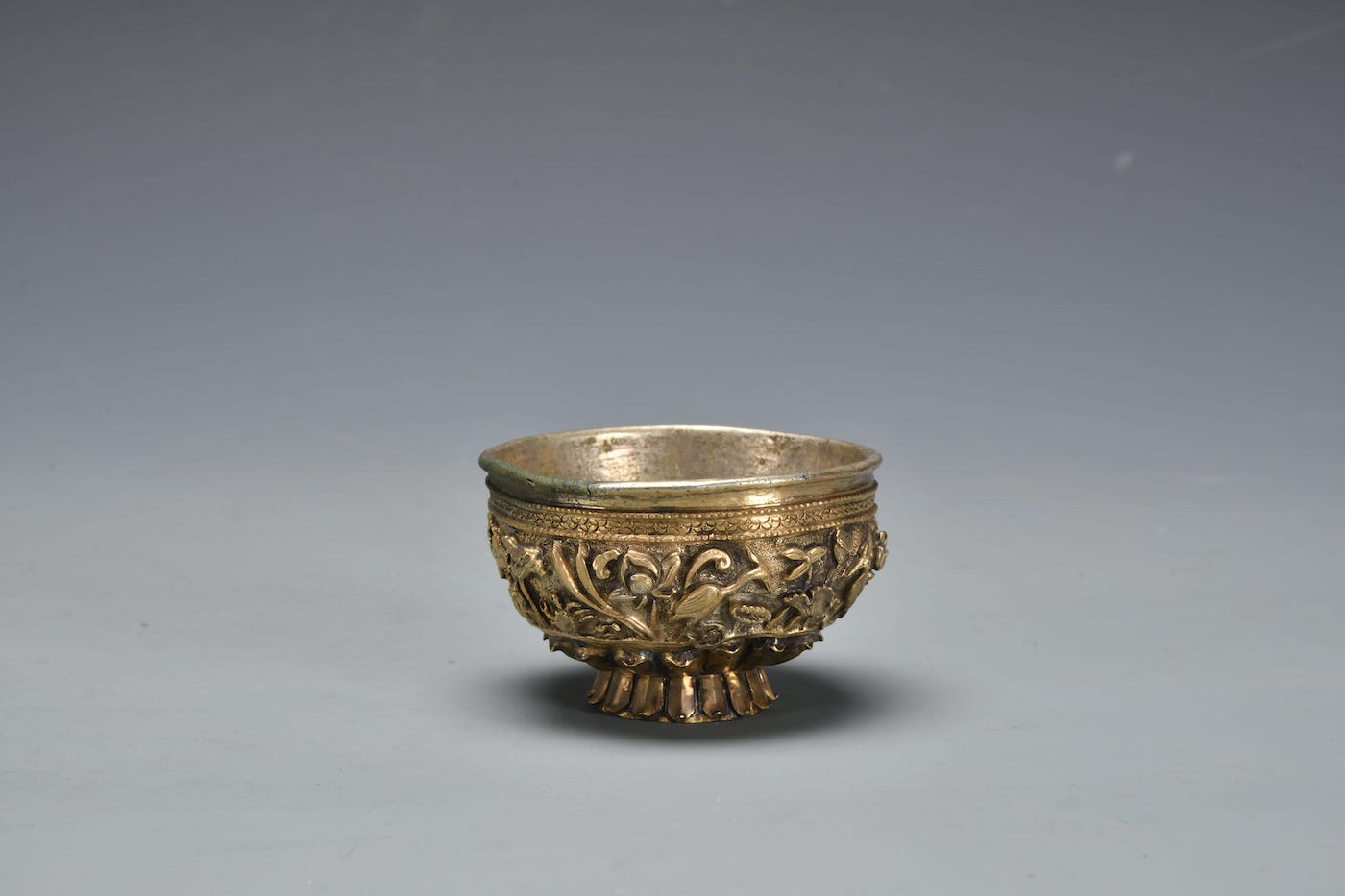
Manchijiao interlayer silver gilt golden cup, Southern Song Dynasty (1127-1279) Collection of Hangzhou Museum
Gilt silver cup. Round, curved belly, circle feet outwardly slanted. It is composed of two layers of inner and outer layers. The inner wall is rolled out and the edge of the button is turned over; The lotus petal pattern, the circle foot is surrounded by the lotus pattern, and there is a "stream" inside.
The cup is a common wine utensil in the gold and silverware of the Song Dynasty. The gold and silver wineware has gradually become popular since the Tang Dynasty and developed to the Song Dynasty. At the same time, the ideology of restoring ancient ways and rituals prevailed, and the literati and doctors were all fond of the ancient style. In the Song Dynasty, there was a trend of imitating bronze ware. In order to meet this aesthetic demand, the interlayer technology came into being. The application of the interlayer process to the production of gold and silverware can not only reduce the weight of the utensils and save the raw materials, but also make the gold and silver utensils better show the characteristics of bronze wares being thick and dignified. The interlayer process of the casing is to first decorate the two layers of carcasses that make up the main body of the utensil, then put the smaller carcass into the larger carcass and splicing it together. The two are combined in a way, and finally be hammered and trimmed to form the effect of a hollow interlayer. The utensils formed by this production process not only meet the aesthetic requirements in appearance, but also have a relatively light shape, and have a heat insulation effect when holding hot drinks, and have high practicability. This gilt silver cup is made by this process. 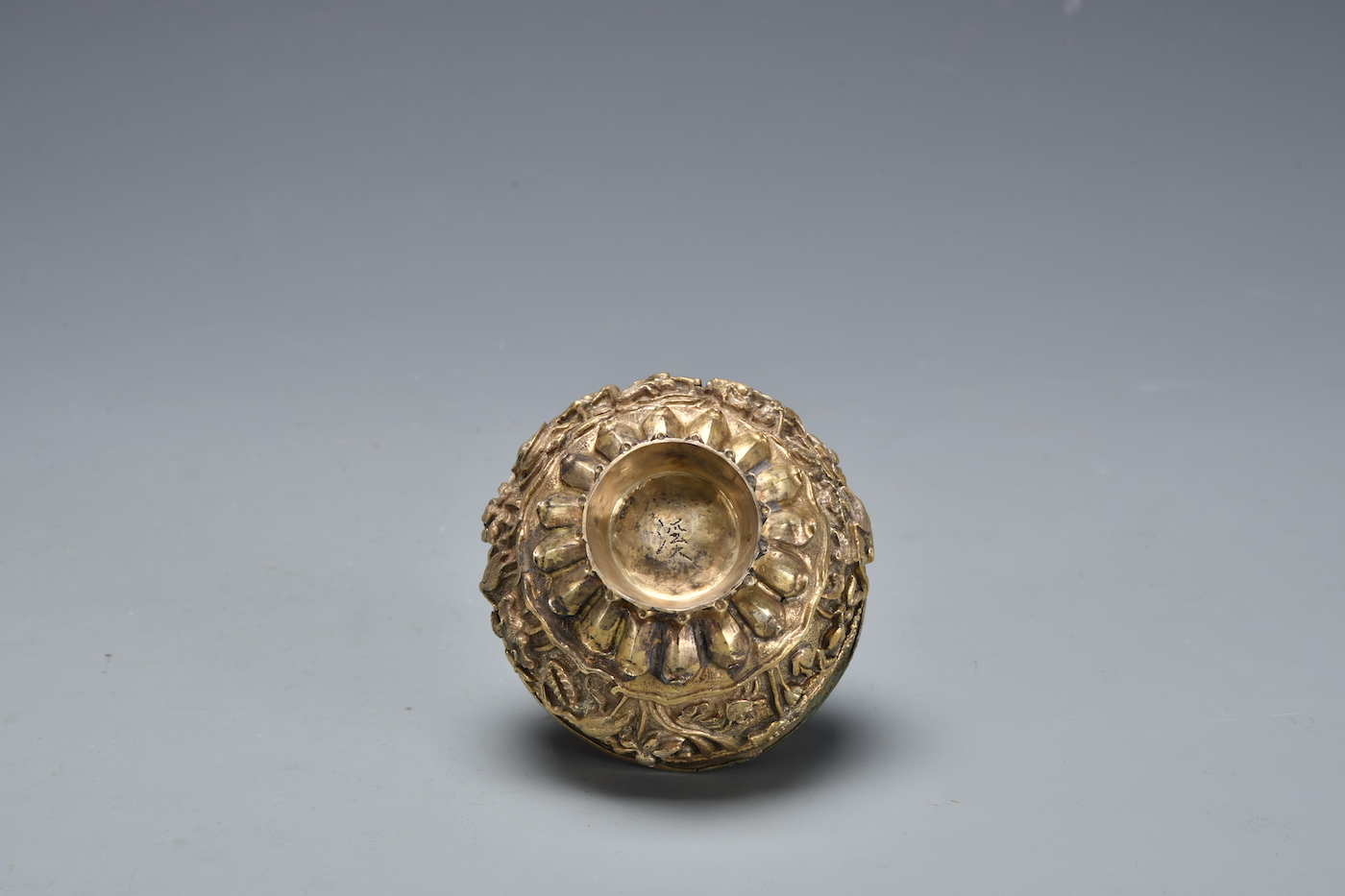
Manchijiao interlayer silver gilt golden cup, Southern Song Dynasty (1127-1279) Collection of Hangzhou Museum
"Manchijiao" is a traditional pattern widely used in my country, referring to the small pond scene composed of lotus, lotus and water birds. The earliest appearance period is not clear, but it has been recorded in the Southern Song Dynasty "Menglianglu". The lotus flowers are full of Chi Jiao's vest". The decoration is based on lotus, lotus leaves, flying birds and water waves, and the specific arrangement is different. The birds are mostly mandarin ducks, teals, and roosters. The outer abdomen of this utensil is fully decorated with patterns of lotus, cigu, mandarin duck, kingfisher, fish, crab and other patterns with high-relief guipure. On the utensils, it is realistic and full of life interest.
The pattern of "Manchijiao" in the Song Dynasty has obvious signs of being transplanted into flower and bird paintings in terms of composition, style, and partial treatment. Since then, the "Manchijiao" pattern has been fixed and has become an important pattern theme on gold and silver jewelry, utensils, porcelain, and weaving and embroidery. It was also widely used on fabrics and blue-and-white porcelain in the Yuan Dynasty. 
Golden bridge hairpin with bamboo leaf pattern, Southern Song Dynasty (1127-1279) Unearthed from the Song Dynasty Tomb in Jinjiaoyi Mountain, Yangdawu Village, Baiyun Street, Dongyang in 2009, in the collection of Dongyang City Museum
The golden hairpin is double-strand, and is continuously bent into fifteen flower heads with a thick gold wire strip, and some flower heads and hairpin beams are fixed with gold wire knots. The head of the hairpin is engraved with bamboo leaf patterns, which are finely carved, like pieces of bamboo leaves that are turned outwards due to the wind.
The bridge hairpin is a more popular style in the Song Dynasty. Usually, there are several pairs of flower heads arranged in a fan shape on the hairpin beam. The lower edge of the hairpin beam is connected to the hairpin feet. , Bamboo pattern, etc. The crafts such as hammering and chisel carving are often used to make delicate embossed embossed decorations, which make the decorative patterns more three-dimensional.
Driven by the Song people's increasing consumption and aesthetic pursuit of gold and silver jewelry, the folded hairpins tend to be complicated, and there are many curved flower-headed hairpins. The fifteen flower heads of this bamboo hairpin are bent into an arch, which is a "bridge style". Similar bamboo hairpins have also been found in hoards of gold and silver wares of the Song and Yuan Dynasties found in Jiangxi, Hunan and other places, or were of the popular style at that time. "The Complete Works of the Newly Compiled Home Essentials" contains: "Today's house and family, I like the life of the times, and change it frequently." The particularity of the materials of gold and silver jewelry makes it easy to change the old style to the new, and satisfy the people's expectations of "the style of the times". pursuit. 
Silver collar condensate, Southern Song Dynasty (1127-1279) "Nanhai No. 1" shipwreck emerges from the water, in the collection of Guangdong Provincial Institute of Archaeology
This silver collar condensate is formed by the adhesion and condensation of two "twenty-five tael" type silver collars. The condensed shell of the silver collar on the top has fallen off, revealing the stamp on the silver collar. ", with "Beijing Sales Collar Silver" engraved on the right.
"Beijing sells ingot silver" is the most common stamp inscription in the silver ingots of the Southern Song Dynasty, which guides the ingots and silvers cast by gold and silver exchange in Lin'an Prefecture, the capital of the Song Dynasty. In addition, there are also a small amount of silver ingots such as "Jingpin infiltration silver", "Jingpin fine infiltration" and "Jingpin positive infiltration". 
Silver collar condensation (partial)
During the Song and Song Dynasties, the currency status of silver was greatly improved, and the scope and amount of use were greatly increased. Silver is used in financial revenue and expenditure, private gifts, bribes, loans, etc., and large-scale payments such as purchasing government houses and pastoral treasures are also important uses of silver. At that time, silver was in the form of silver nuggets, silver coins, silver collars and silver medals, with silver collars being the most common.
In addition to the large-scale use of silver in the private sector and officialdom, the circulation of silver in the Song Dynasty gradually expanded, and overseas trade was also widely used for payment and settlement. This condensate fully reflects this historical fact.
Wen Yupeng, a librarian of Hangzhou Museum, said in an interview with The Paper that this exhibition innovatively adopts the design of "dual entrance", "forward narrative" and "flashback", "right reading" and "backward reading" can be used, corresponding to "standing today" Looking back at Lin'an City in the Southern Song Dynasty about 800 years ago" and "Standing at Lin'an City in the Southern Song Dynasty about 800 years ago, looking at today's Hangzhou City", so that the "two cities" overlap in the same space, the audience can freely choose "from where to begin" to understand the city. 
"Walking Between Landscapes - Hangzhou Lin'an City from the Perspective of the Southern Song Dynasty" exhibition site
Due to the immovable and non-renewable characteristics of archaeological sites, the exhibition uses 3D models to make "city walls and gates", "Zhongshan Middle Road Royal Street Site", "Southern Song Dynasty Gongsheng Renlie Queen's House Site" and "Wuyuehan Seawall" more intuitive. Presenting the archaeological site to the audience, "reproducing" Lin'an City. 
"Walking Between Landscapes - Hangzhou Lin'an City from the Perspective of the Southern Song Dynasty" exhibition site
Lin'an City in the Southern Song Dynasty is an ancient city site that completely overlaps with the modern city. In the autumn of 1983, the Archaeological Research Institute of the Chinese Academy of Social Sciences, the Zhejiang Provincial Institute of Cultural Relics and Archaeology, and the Office of the Hangzhou Municipal Cultural Relics Management Committee established the Lin'an City Archaeological Team. Where - 900 years of time, preserved in a specific physical space that can be measured, organized, preserved, and displayed. 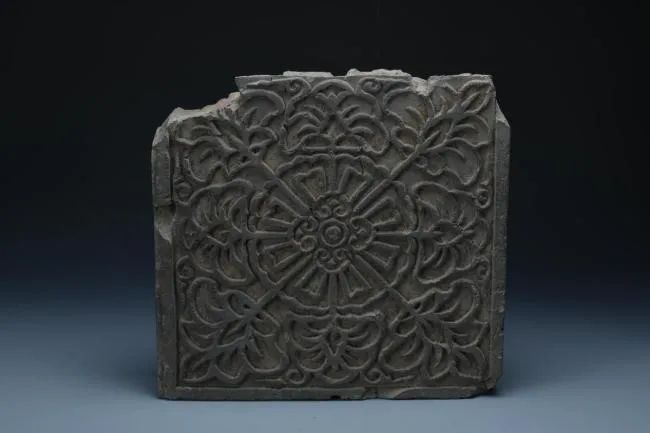
Song Baoxiang flower floor tiles Unearthed from the Southern Song Dynasty Lin'an Fuzhi Ruins in Hehuachitou, Shangcheng District, Hangzhou in 2000, provided by Hangzhou Institute of Cultural Relics and Archaeology
"Through the exhibition, we tried to answer two questions about Lin'an City: what did we discover? What did we know? Then we explored a question: how do we understand this 'city'?" Xu Xiaoxiao, deputy director of the Hangzhou Museum, further said, “A city is an organizational form unique to human society, with multiple dimensions of physical space, social form, and spiritual projection. Here, individual memory and collective memory, social memory and cultural memory meet—the relationship between things and people, the The relationship with the city, the city of yesterday and the city of today, the city of today and the city of the future. 'Walking between the mountains and rivers, 'Why Hangzhou' connects the past, the present and the future." 
"Walking Between Landscapes - Hangzhou Lin'an City from the Perspective of the Southern Song Dynasty" exhibition site

"Walking Between Landscapes - Hangzhou Lin'an City from the Perspective of the Southern Song Dynasty" exhibition site

"Walking Between Landscapes - Hangzhou Lin'an City from the Perspective of the Southern Song Dynasty" exhibition site
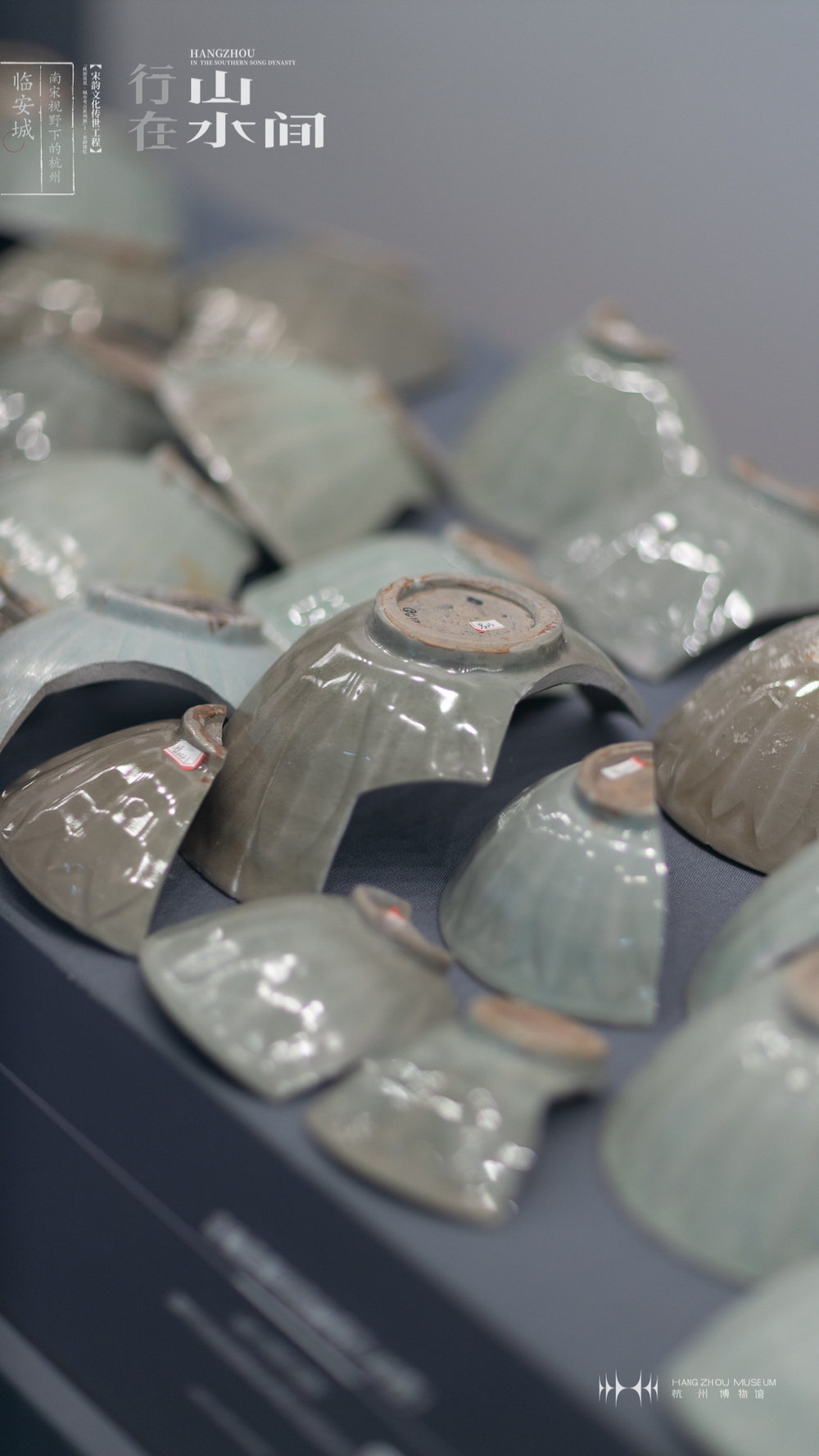
"Walking Between Landscapes - Hangzhou Lin'an City from the Perspective of the Southern Song Dynasty" exhibition site
It is reported that the exhibition is sponsored by the Hangzhou Municipal Bureau of Landscape and Cultural Relics, and undertaken by the Hangzhou Museum, the Hangzhou Institute of Cultural Relics and Archaeology, and the Hangzhou Culture and Tourism Promotion Center. The Palace Museum, Guangdong Provincial Institute of Cultural Relics and Archaeology, Zhejiang Provincial Museum, Zhejiang Provincial Institute of Cultural Relics and Archaeology, Zhejiang Library, Luoyang Museum, Suzhou Museum, Suzhou Inscription Museum, Quzhou City Museum, Dongyang City Museum, Yiwu City Museum, Wuyi County Museum , Tongxiang City Museum, Hangzhou West Lake Museum General Hall, Hangzhou West Lake Scenic Area Phoenix Mountain Management Office, Hangzhou Cultural Heritage and Historic Building Protection Center, Hangzhou Lin'an District Museum, Hangzhou Fuyang District Museum, Tonglu County Museum to provide collection support.
The exhibition will run until January 3, 2023.
